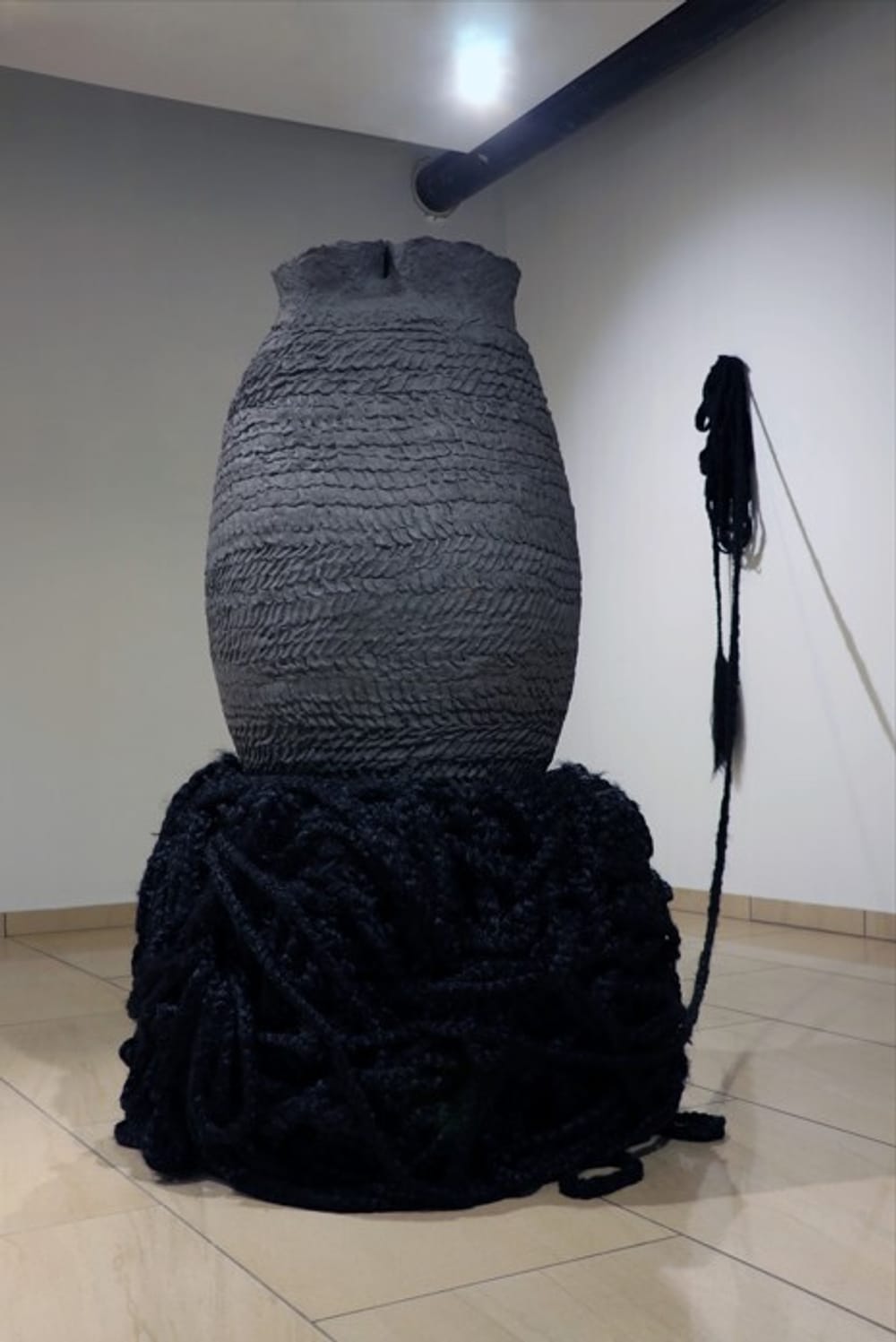Stay in the Loop
BSR publishes on a weekly schedule, with an email newsletter every Wednesday and Thursday morning. There’s no paywall, and subscribing is always free.
Three enigmatic solo shows explore empathy
The Clay Studio presents resident artists Akiko Jackson, Minah Kim, and Kevin Snipes

Simultaneous shows from resident artists Akiko Jackson, Minah Kim, and Kevin Snipes at the Clay Studio Center for Innovation in Ceramic Art explore vastly different media and aesthetics, but all draw on themes of empathy and human connection.
The Clay Studio draws regional and international creators to its artist-in-residence program, in which selected artists live and work in Philadelphia for up to three years. They receive studio space, teach classes and workshops, and mentor ceramic students. At the end of their residency, they display a body of work in the center’s Jill Bonovitz Gallery. Jackson (hailing from Hawaii), Kim (a resident of South Korea), and Snipes (a Cleveland native) wrap up their time at the Clay Studio with this trio of solo shows.
Where Do We Go When We Open the Heart?
Jackson’s works occupy the front of the gallery, which has large, tall windows facing North American Street. This was the perfect choice for her installation, titled Where Do We Go When We Open the Heart?, because these incredible objects require a sense of space to activate their power. There are five monumental, dark grey, coil-built vessels with prominent surface textures that evidence Jackson’s repetitive fingerprint on the wet clay, the visual version of a meditative chant. The biomorphic shapes of the forms seem to reference the body and internal organs, reminding me of ancient Mediterranean pithoi storage vessels, more funereal than utilitarian.
Instead of titles, the works get numbers. Four sit atop minimalist metal plinths contrary to their bulk, which creates a compelling tension of precarity. The largest rests on a massive nest of hair-like braids, some strands anchored to an adjacent wall, referencing notions of tradition, memory, and maternal labor.
The vessels are dramatically set off by a long parallel wall, covered in a patchwork of gold leaf, referencing kintsugi, the Japanese art of mending broken pottery by way of lacquer powdered with gold. The lustrous, fluttering, idealized surface of the gold against the somber, static vessels evokes yet more tension.
Jackson invites her audience to unpack familial connection, displacement, and fracture. By way of visual contradictions, Jackson’s vessels are sites of archive, care, and presence.
Parallax
Kim’s installation, Parallax, is equally enigmatic. First, the visitor encounters a screen that blocks direct access to the gallery space. Made of white 3D-printed pieces assembled seamlessly, it functions as a traditional rood screen, a visual and physical barrier separating the nave from the altar in a church. This restricts the view of the work and compels the audience to walk through one of the other two galleries to enter.

Four figurative stoneware sculptures are on display. A child-sized figure stands on a low pedestal made of charred pine wood outside the gallery space, facing the screen. A self-portrait, the work hints at Kim’s thesis, as the definition of parallax is the effect of how something appears from different viewpoints. The remaining three sculptures are arranged inside the gallery on the other side of the screen. My first death is a black, life-size figure kneeling directly on the floor with its head and arms resting on a coffin-shaped plinth, also made of charred pine wood. Nearby, a second child-sized figure (Writer) in monochromatic ivory is slouched in a position of exhaustion. All the sculptures lack identifying details such as hair, clothing, or sex. The exception is a half-length, over-life-size maternal figure cradling a shape that suggests an infant wrapped in a shroud titled You are gone / I am not alone.
Three of the figures, along with the small, shrouded shape, are densely textured with areas of pinched clay. This may be iconographically understood as pain laid upon the figures in abstracted form, indicating structural-political violence. The screen design is fashioned with the same repetitive gesture: brutality as a universal structure that obscures or erases. When you stand inside the gallery, light piercing the screen creates subtle shadows and reflections, evoking unseen sorrows. Kim is an artist-philosopher; Parallax asks important philosophical questions around suffering.

Cure for Pain
Cure for Pain is the fitting title of the exhibition by Snipes, though I was baffled by the absence of any ceramics on display, given the context of the show. Instead, Snipes leans into an obvious love of drawing and color with 12 small mixed-media works, some on handmade paper and uniformly framed in plain white, displayed on the walls. All are titled Fever Dream with a corresponding number. An affection for drawing faces/characters is evident in nine portraits and other images, hinting at influences of Greek vases, Afro-Futurism, Cubism, and comic books. Fever Image 6 seems to be a self-portrait in the manner of a Limbourg Brothers Medieval illustration in a Book of Hours. A little figure is throwing a pot in an enclosed studio space, and nearby, their bicycle is parked outside the door. Snipes creates art that is playful and joyous. Each face is a protagonist for all the stories Snipes wants to tell.
At top: Akiko Jackson’s 2023 Where Do We Go When We Open the Heart?. (Photo courtesy of the Clay Studio.)
What, When, Where
Resident artist exhibitions by Akiko Jackson, Minah Kim, and Kevin Snipes. Free and open to the public. Through September 7, 2025, at the Jill Bonovitz Gallery of the Clay Studio Center for Innovation in Ceramics, 1425 N American Street, Philadelphia. (215) 925-3453 or theclaystudio.org.
Accessibility
The Jill Bonovitz Gallery is a wheelchair-accessible space with restrooms adjacent to the main gallery.
Sign up for our newsletter
All of the week's new articles, all in one place. Sign up for the free weekly BSR newsletters, and don't miss a conversation.

 K.A. McFadden
K.A. McFadden